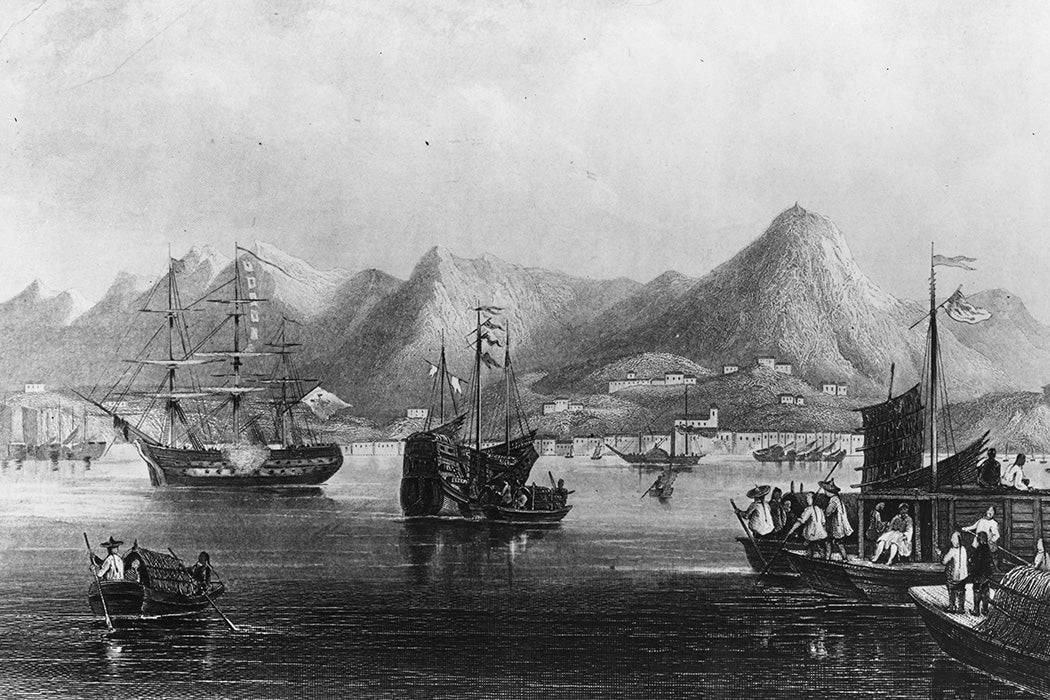Between the sixteenth and nineteenth centuries, European nations sent missions around the world, bringing back loot and trade goods that became prized luxuries. Often, it was the wealthy who were able to procure these spices, textiles, and other treasures. But, as historian Beverly Lemire writes, such goods also moved around the plebian world, thanks to the ordinary mariners who crewed the ships.
Lemire notes that sailing was unimaginably difficult and dangerous. Mortality rates for European crews sailing to Asia ranged from 27 percent to over 50 percent. One compensation was sailors’ traditional right to carry cargo of their own. While employers like the East India Company were reluctant to part with any of the valuable space on the ship, they found that, as one official put it, “if some toleration for private trade be not permitted, none but desperate men will sail our ships.”
As far as customs agents were concerned, this private transportation of trade goods was often considered smuggling. But this didn’t stop mariners from quietly making deals with merchants they met in their travels.
“Unsanctioned, hand-to-hand interactions took place on shore or over the ship’s side, with seamen of every station striving to gain from their global contacts,” Lemire writes.
Seafaring was a way for people from modest backgrounds to find a place in emerging entrepreneurial endeavors. Lemire cites records kept by one unusually literate mariner, Edward Barlow, who was born into poverty in seventeenth-century Lancashire, England and learned to write at age thirty while he was held captive during the third Anglo-Dutch war. Barlow became a careful observer of goods to be found from Tripoli to China. He acted as the agent of a network of friends and acquaintances who were willing to invest in his efforts to procure exotic items. At one point, for example, he wrote of bringing back printed textiles and jeweled plumes from India for his cousin’s wife.
Weekly Newsletter
Lemire argues that the silks, ceramics, tobacco, nutmeg, and other exotic merchandise that sailors brought to port cities were culturally transformative. For example, colorful Indian handkerchiefs became a standard part of mariners’ attire and also a product they could sell in any port around the world. By the start of the eighteenth century, they were a fashion statement for ordinary people, including working-class Europeans, enslaved people, and colonial subjects. (It helped that they were easy to smuggle—on one occasion, for example, a London customs agent searched a woman who had visited a docked ship and found 281 India silk handkerchiefs under her petticoats.)
All over Europe, coastal communities large and small benefited from small-scale overseas trade. By the early eighteenth century, even the poor in fishing villages of Holland and on the streets of Amsterdam enjoyed access to china and Indian cottons, and tea, coffee, and tobacco were available at low cost in Aberdeen, Scotland.
“Seamen funneled money plus delightful and distinctive possessions into the hand of their shipmates, wives, sweethearts, kith, kin, and countrymen, puncturing hierarchical assumptions about socially appropriate consumer practice,” Lemire writes.







